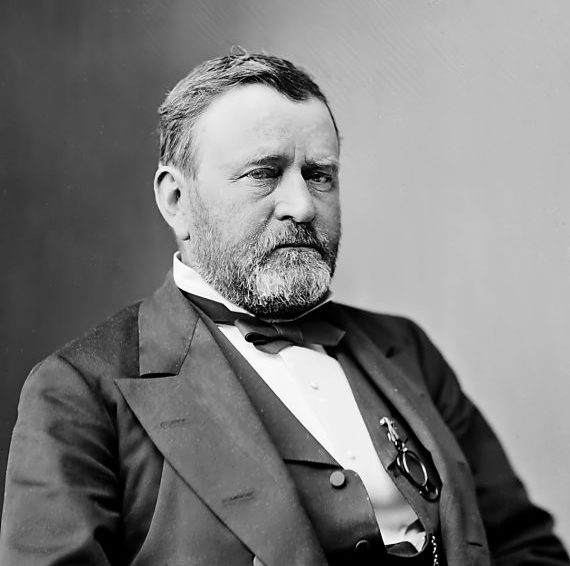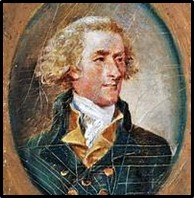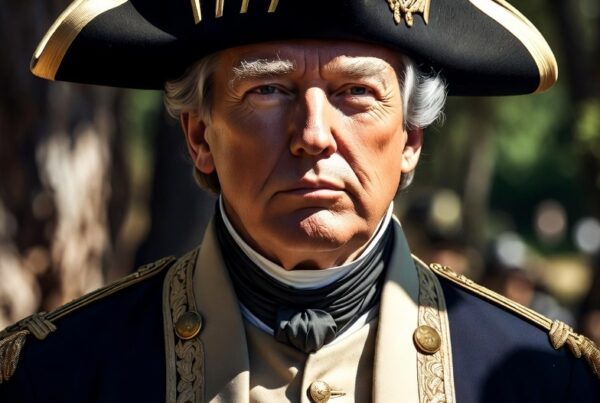Below is a footnote-free version of the Preface from my U. S. Grant’s Failed Presidency (2019).
Ulysses Grant’s presidency deserves a fresh analysis because modern historians and biographers have praised him too much. Initially, their “rehabilitation” of his previously mixed reputation concentrated on his military performance during the Civil War, but more lately it has included his presidency. In 1948, for example, Grant ranked near the bottom at twenty-eighth out of thirty presidents. But in 2017 a separate survey ranked him in the middle of the pack at twenty-second out of forty-one rated Presidents.
The ranking improvement reflects two factors. First is an increasing focus on his civil rights policies on behalf of blacks, if not other minorities. Historians who came of age during, or after, the 1960s civil rights movement tend to concentrate on the racial aspects of Reconstruction. In a 2018 interview, for example, Ron Chernow proclaimed Grant to be “the single most important president in terms of civil rights between Abraham Lincoln and Lyndon B. Johnson . . .” Second is a tenacious propensity among modern historians to minimize the corruption that plagued his presidency as well as an inclination to dismiss suspicions that he may have been personally culpable.
Regarding the first point, today’s historians too often fail to critically evaluate Grant’s motives for supporting black civil rights, particularly voting rights. He is commonly portrayed as promoting them as a noble stand for racial equality. They fail to adequately examine evidence that his prime motive may have instead been to gain the political power that a routinely obedient voting bloc could provide to Republican candidates. Consider, for example, that only a minority of America’s whites voted for Grant when he was first elected President in 1868, despite his popularity as a war hero. His 300,000 popular vote majority resulted from winning 90% or more of the votes among the mostly illiterate ex-slaves. His presidential platform in the 1868 election that first put him in the White House demanded black suffrage in the South but not the North.
More importantly, Grant may have limited his civil rights advocacy to blacks since they composed the solitary minority group that could be politically significant. He did nothing for smaller racial minorities such as Indians, Chinese Americans, and other immigrant groups. In fact, at the end of the Civil War Grant even opposed voting rights for blacks, including those who were Union veterans. His move toward black suffrage over the next three years paralleled his increasing intimacy with Radical Republicans and fully crystalized with his nomination for President on the Republican ticket in May 1868.
Indians generally could not vote during Grant’s Administration. Moreover, in 1875-76 he secretly provoked a war with tribes in the Northern Great Plaines. He wanted to give white men access to doubtfully valuable gold deposits in the Black Hills to help America’s economy recover from the depression that followed the Panic of 1873. Although the war is best known for the fight at “Custer’s Last Stand” the U. S. Supreme Court ruled a century later that it was illegal and awarded over $100 million in damages to tribal descendants.
Chinese Americas were also generally denied the vote. They could not even become naturalized citizens until 1943. Even though they never numbered more than ten percent of California’s population, they represented about two-thirds of the state’s lynch victims between 1849 and 1902. In fact, one of the biggest lynchings in American history took place in Los Angeles during Grant’s first presidential term in 1871. The nineteen victims were Chinese Americans.
Since the Fourteenth Amendment only granted citizenship to blacks born in America, Grant signed the 1870 Naturalization Act to enable blacks born elsewhere to become citizens. But the act deliberately excluded Chinese Americans and other “non-whites.” In 1875 he signed the Page Act that restricted entry into America by Chinese immigrants and other “undesirables.” The 1875 Civil Rights Act also failed to include Chinese Americans. In Driven Out: The Forgotten War Against Chinese Americans, Jean Paelzer explained the effect of such restrictions and omissions: “The Civil Rights Act and the Page Act of 1875 . . . removed the right of Chinese immigrants to ever become citizens and banned the immigration of most Chinese women.”
As for the dubious ethics displayed by Grant’s Administration there were at least ten incidents of malfeasance connected to it during his eight-year presidency. The sheer number and frequency that repeatedly signified Grant’s association with men of questionable character may also hint at his own potential culpability. Consider, for example, the President’s conduct during the Whisky Ring Scandal, which involved tax evasion and bribery in the distilled spirits industry, which was the top source of domestic (internal) federal tax revenue.
Ultimately the Treasury’s investigation led to the threshold of the presidency when Grant’s personal secretary, Orville Babcock, was indicted as a leading Ring conspirator. Grant responded by first trying to move the trial to a friendly military court since Babcock was also an army officer. But a Justice Department prosecutor blocked the move by noting the procedural violations that would result from removing evidence from the court of jurisdiction. Second, he hired a spy to infiltrate the prosecutor’s office, but the spy eventually sided with the prosecution. Third, he fired an assistant prosecutor whose comments during a jury summation personally offended the President. Fourth, he forbade prosecutors to plea bargain with low-level conspirators to convict high-level participants. Fifth, two days before Babcock’s trial the Treasury Department’s chief clerk wrote future Supreme Court justice John Harlan, “What has hurt [Treasury Secretary] Bristow worst of all & most disheartened him is the final conviction that Grant himself is in the Ring and knows all about [it.]”
Grant also used a law commonly associated with protecting black civil rights in the South to police voter registrations in big Northern cities where growing immigrant populations were steadily strengthening the Democrat Party. When the wife of Attorney General George Williams accused Grant of using secret service funds to benefit Republican candidates in New York City the President explained that the money was spent in compliance with the 1871 Ku Klux Klan Acts to pay for voter registrations.
Grant was also an eager recipient of valuable gifts for which he would reciprocate with patronage appointments. Between 1865 and 1869 inclusive, donors bought—or gave him enough money to buy—a total of four homes in Galena, Illinois, Philadelphia, Washington City, and Long Branch, New Jersey.
One of the seven donors of the 27-room Long Branch “cottage” was Tom Murphy who had been a notorious supplier of shoddy merchandise to the Union army during the Civil War. Grant later appointed Murphy as customs collector for the Port of New York where three-fourths of America’s tariffs were paid. It was the most lucrative patronage assignment available in the federal government.
Similarly, Grant assigned General Daniel Butterfield to New York’s sub-Treasury office in exchange for raising a fund enabling General William T. Sherman to buy Grant’s Washington home at a price that was more than double the price Grant paid only three years earlier. Soon after his appointment, Butterfield took a bribe to join Jay Gould’s attempted corner the gold market in September 1869.
Historians specializing in the Civil War and Reconstruction era may sometimes be more persuaded by Grant’s words than his actions. But, as J. P. Morgan once remarked, “A man always has two reasons for the things he does—a good one and the real one.” Morgan was implying that the good reason is a false, benevolent explanation that conceals the real self-serving one. For example, Grant justified restricting the immigration of Chinese women by implying that he wanted to avoid forcing them into prostitution. In his 1875 annual message he said, “few . . . are brought to our shores to pursue honorable or useful occupations.” But Chinese American history specialist Jean Paelzer concludes that the real purpose of the act was “to force thousands of men to return to China” since only four percent of Asian Americans in 1875 were women.
Similarly, Grant initially adopted a benevolent attitude toward Indians. In his first annual message in December 1869, he announced that he had put Quakers in charge of several reservations because the sect had long coexisted peaceably with Indians: “From the foundation of the Government to the present, management of the . . . Indians . . . has been a subject of embarrassment and . . . attended with continuous robberies, murders, and wars. I do not hold . . . the conduct of the whites . . . blameless . . . [and] have attempted a new [Quaker managed] policy . . . with fair results so far . . . which I hope will be [a] great success.” Yet, his claims of good feelings proved false when he launched the Centennial War noted earlier.
When a group of black leaders visited the White House to congratulate him on winning reelection in 1872 Grant told them what they wanted to hear: “I wish that everyman in the United States would stand in all respects alike.” But, to Grant, “everyman” did not include Indians and Chinese Americans, among other non-black minorities.
Since Grant sometimes contradicted himself, his true meaning must be deduced from his actions and not his words. Yet some modern biographers too readily accept the statements that reflect upon him favorably and ignore the contradictory ones. Charles Calhoun does so when suggesting that Grant supported labor over capital in the 1877 railroad strike during the first year of the ensuing Rutherford Hayes presidency. While complaining that the press had been overly critical of his use of federal troops in the South, Calhoun quotes Grant as whining, “Now [during the 1877 railroad strike], however, there is no hesitation about exhausting the whole power of the government to suppress a strike on the slightest intimation that danger threatens.”
But in an August 27, 1877 letter to brother-in-law Abel Corbin Grant displayed a hard stance toward labor, unlike the sympathetic one implied above. He wrote, “My judgment is that it [the strike] should have been put down with a strong hand and so summarily as to prevent a like occurrence for a generation.”
Finally, even though Grant’s fundamental interest in black civil rights may have reflected the power of the group’s voting bloc more than the morality of racial equality, it ultimately failed to be enough to sustain his support. The moment of truth came during the autumn 1875 elections in Mississippi and Ohio.
Mississippi carpetbag governor Adelbert Ames twice asked Grant for federal troops to police the polls on Election Day but was turned down. It would be another forty years before former Republican and black Mississippi Congressman John Lynch revealed that Grant had confessed to him in November 1875 that Ohio politicians told the President that intervention in Mississippi would likely cause Republicans to lose Ohio. Basically, Grant traded a Republican victory in Mississippi for a bigger one in Ohio. Thereafter, the Republican Party steadily lost interest in Southern blacks.
Understanding Grant’s roller-coaster reputation begins with a study of contrasts. In a mere seven years he rose from obscurity to the presidency only to generally skid downward from his inauguration day to the end of his second term.







“Juneteenth” – and everything connected with it – is just a pathetic “white” surrender to the “African-American” will-to-power.